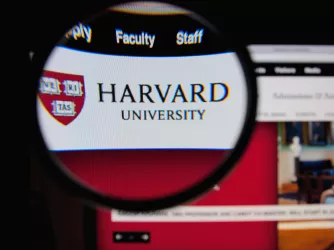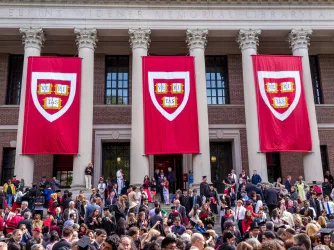Table of Contents
Disappointing Student Speech Ruling from Ninth Circuit Threatens Student Journalism

On April 7, the United States Court of Appeals for the Ninth Circuit handed down its opinion in O’Brien v. Welty, ruling against California State University, Fresno (Fresno State) student Neil O’Brien’s First Amendment challenge to the university’s harassment policy. The decision is a disappointing setback for student speech rights, and may have particularly negative ramifications for student journalists asking hard questions.
In May 2011, O’Brien, a conservative activist and the founder of Fresno State’s chapter of Young Americans for Liberty, visited the offices of two professors to complain about a poem printed in “La Voz de Aztlan,” a section of the student newspaper published by the school’s Chicano and Latin American Studies department. With his camera rolling, O’Brien asked the professors through their open office doors whether they had approved the poem’s publication. Both professors refused to answer and called the police.
The professors filed a complaint against O’Brien shortly thereafter, and he was found responsible for violating Fresno State’s harassment policy in September 2011. The policy bans conduct that “threatens or endangers the health or safety of any person . . . including physical abuse, threats, intimidation, harassment, or sexual misconduct.” O’Brien filed suit in November 2012, alleging a violation of his First Amendment rights and challenging the harassment policy as unconstitutionally vague and overbroad.
A federal district court rejected O’Brien’s First Amendment claims in May 2013, finding that “[p]layed against the backdrop of Plaintiff's admittedly ‘outspoken,’ continuous and apparently contentious campaign against what he perceives to be the dominant political climate, Plaintiff’s attempt at in-your-face interviews with video camera going, and his failure to immediately desist when requested to do so is nothing short of harassment and at least attempted intimidation.”
O’Brien appealed the ruling to the Ninth Circuit, and FIRE and the Student Press Law Center (SPLC) filed an amici curiae brief in support of his appeal in October 2013. Authored by noted First Amendment scholar and University of California, Los Angeles, (UCLA) School of Law professor Eugene Volokh and students from the UCLA First Amendment Amicus Brief Clinic, our brief argued that Fresno State’s harassment policy was impermissibly imprecise, leaving students to guess at what conduct was prohibited and allowing administrators to interpret the policy selectively. We also argued that the district court’s ruling only exacerbated the problem.
In a press release issued after our brief’s filing, SPLC executive director Frank LoMonte made clear that allowing the ruling to stand would endanger student journalism:
The takeaway from the district court’s overly broad ruling is that, if you turn on your camera to question a government official and you don’t immediately switch off the camera when you’re asked to, you are a ‘harasser’ and your behavior isn’t protected by the First Amendment. That ruling leaves journalists, who sometimes must do confrontational interviews with uncooperative sources, at grave risk of retaliation.
Unfortunately, last week’s Ninth Circuit ruling did nothing to answer our concerns.
Writing for a unanimous panel, Circuit Judge William A. Fletcher upheld the policy’s constitutionality in broad terms. The panel found that the policy “prohibits only ‘harassment’ or ‘intimidation’ that ‘threatens or endangers the health or safety’ of another in the university community”—which, in its view, renders it “much narrower and more precise than university harassment policies that have been held overbroad by our sister circuits” in cases like DeJohn v. Temple University, 537 F.3d 301 (3d Cir. 2008) and Dambrot v. Central Michigan University, 55 F.3d 1177 (6th Cir. 1995).
It’s unclear how the Ninth Circuit reached the conclusion that the Fresno State policy was so clearly distinguishable from these policies. In DeJohn, the Third Circuit struck down a Temple University sexual harassment policy that “had the purpose or effect of creating an . . . offensive environment,” and in Dambrot, the Sixth Circuit struck down a Central Michigan University policy that prohibited speech creating “an intimidating, hostile, or offensive . . . environment.” Both of these policies were correctly found to be unconstitutional. But what makes the Fresno State policy—which prohibits conduct that “threatens or endangers the health or safety of any person . . . including physical abuse, threats, intimidation, harassment, or sexual misconduct”—“much narrower and more precise” than either? The Ninth Circuit doesn’t explain, apparently believing the difference to be self-evident.
Perhaps the Ninth Circuit concluded that because the Fresno State policy doesn’t contemplate prohibiting the creation of an “offensive environment,” it’s thus sufficiently precise and narrow to withstand First Amendment challenge. But, troublingly, the Ninth Circuit immediately cites Harper v. Poway Unified School District, 445 F.3d 1166, 1178 (9th Cir. 2006) in support of its conclusion. In its parenthetical, the court summarizes its ruling in Harper as affirming the constitutionality of discipline meted out to a high school student “who wore [a] homophobic t-shirt because it ‘injure[d] and intimidate[d]’ others.” The court cites Harper here as evidence that it has “recognized the needs of educational institutions to protect their employees and students from potentially harmful conduct.”
But even setting aside the substantive difference between the First Amendment rights afforded public high school and college students, this citation undercuts rather than strengthens the court’s assurances about the benign reach of Fresno State’s harassment policy. If, in the Ninth Circuit’s estimation, a t-shirt with a political message is sufficiently “harmful” to students that it permits discipline, how exactly does that conclusion alleviate First Amendment concerns about the potential reach of a policy that prohibits “harassment” that “threatens or endangers the health or safety” of other university community members? Particularly when the policy at issue is being upheld in the context of the punishment of a student who was “calmly” asking faculty members about a poem’s publication—not, say, issuing them threats of physical arm?
Again, the court doesn’t provide answers, and students and faculty are now left to guess as to whether asking questions of fellow campus community members could warrant punishment. This chilling effect is an unfortunate result, to say the least. Echoing LoMonte’s 2013 statement, Professor Volokh noted for The Washington Post’s Volokh Conspiracy blog that the ramifications for student journalism are worrying:
This has pretty striking implications for student journalists: “Asking hostile questions and videotaping” professors — or staff members — through office doorways could be seen as punishable “threaten[ing] or endanger[ing] the health or safety of any person,” at least so long as the journalist refuses to immediately stop when told to do so. And this is so even when there’s no indication that the journalist has been violent or threatening in the past (since the court didn’t rely on any such indication about O’Brien here).
Indeed, since the court’s reasoning turns on the conduct being supposedly “threaten[ing] or “endanger[ing],” rather than (say) intrusive on privacy, it may well apply to merely asking hostile questions, without videotaping. “Professor Volokh, aren’t you responsible for the evil Volokh Conspiracy blog post about Donald Trump?” “Go away.” “No, professor Volokh, I insist that you talk to me for my article.” That might well be enough, under the Ninth Circuit’s decision, for a student journalist’s speech to be punishable “threaten[ing] or endanger[ing] the health or safety of any person.” (Note that O’Brien is just as protected by the First Amendment as are traditional journalists, which the court indeed acknowledged on p. 23 of the opinion.)
And of course the court’s reasoning would apply to speech said to university students as well. To be sure, they may not have personal offices, but if “asking hostile questions,” after once having been told to stop, can be seen as “threaten[ing] or endanger[ing] the health or safety of any person,” presumably that would apply even when no personal office is involved. I doubt that courts would conclude that professors are more fragile and more easily intimidated than are students.
We strongly share Professor Volokh’s concerns. Of course, FIRE will monitor the fallout closely, and we are committed to mitigating its effects with all of the resources at our disposal.
The Ninth Circuit’s ruling in O’Brien does have something of a silver lining. While the court rejected both O’Brien’s as-applied and facial First Amendment challenges to the Fresno State policy, it allowed his First Amendment retaliation claim to survive. The court found that the facts as alleged by O’Brien were “sufficient to support a reasonable inference that defendants’ actions were substantially motivated by O’Brien’s protected speech prior to the May 11 videotaping incident.” In other words, O’Brien’s version of events is enough to support his retaliation claim past Fresno State’s motion to dismiss.
That makes sense, given the serious allegations contained in O’Brien’s complaint. Per O’Brien, Fresno State administrators responded to his conservative activism by asking “that students and other faculty members gather information and complaints to use against” him, denying him a fair hearing, imposing disciplinary sanctions that would prevent him from participating in his Young Americans for Liberty group or student government, and deleting his Facebook messages and blocking him from the university’s Facebook page. Taken together, the Ninth Circuit found that “a reasonable jury could conclude that defendants sought to punish O’Brien for his expression of his opinions, and to deter and even prevent him from engaging in speech and conduct protected by the First Amendment.”
In a Bloomberg View column, Professor Noah Feldman of Harvard Law School characterizes this aspect of the Ninth Circuit’s opinion as a “major win” for student activists. He writes:
In practice, this means that students at public universities who can credibly suggest that they’ve made themselves unpopular with administrators can sue for retaliatory free-speech violations when they’ve been disciplined -- even if they’ve actually committed the acts that gave rise to the discipline. That guarantees the students a judicial hearing and discovery of university documents.
Given the Ninth Circuit’s disheartening ruling on Fresno State’s harassment policy, this silver lining is welcome.
Recent Articles
FIRE’s award-winning Newsdesk covers the free speech news you need to stay informed.

Revoking Harvard’s tax-exempt status will threaten all nonprofits

Grandpa’s advice for the new wave of American censors

FIRE POLL: Only 1/4 of Americans support deporting foreigners for pro-Palestinian views
